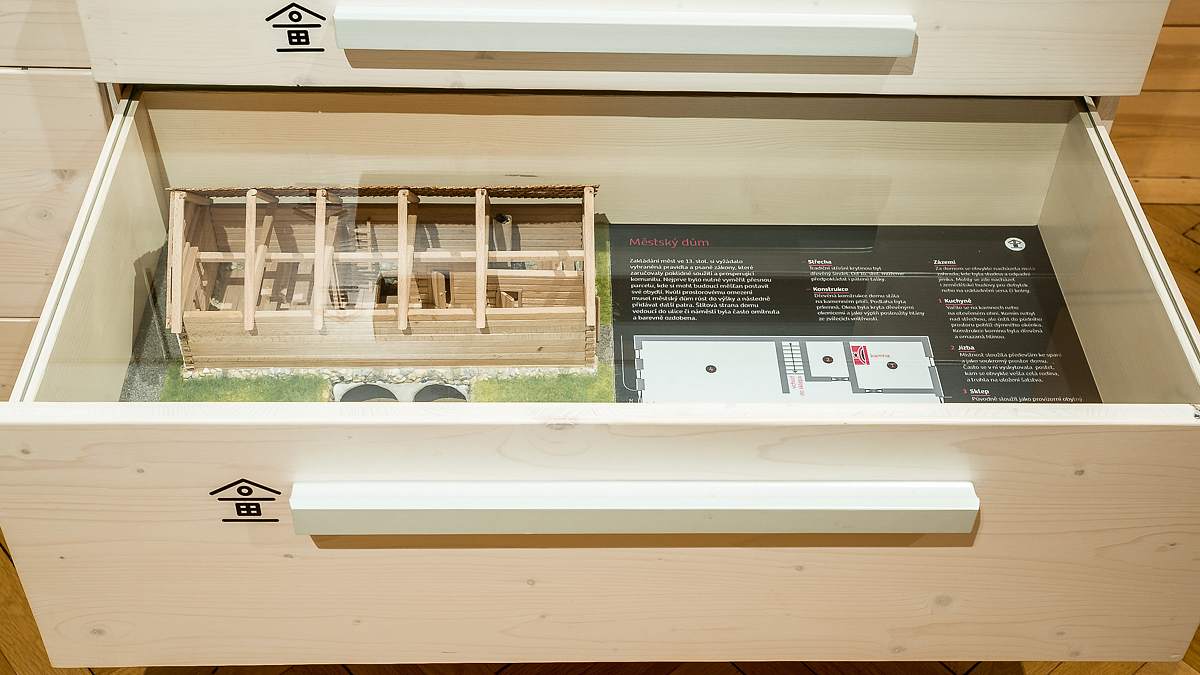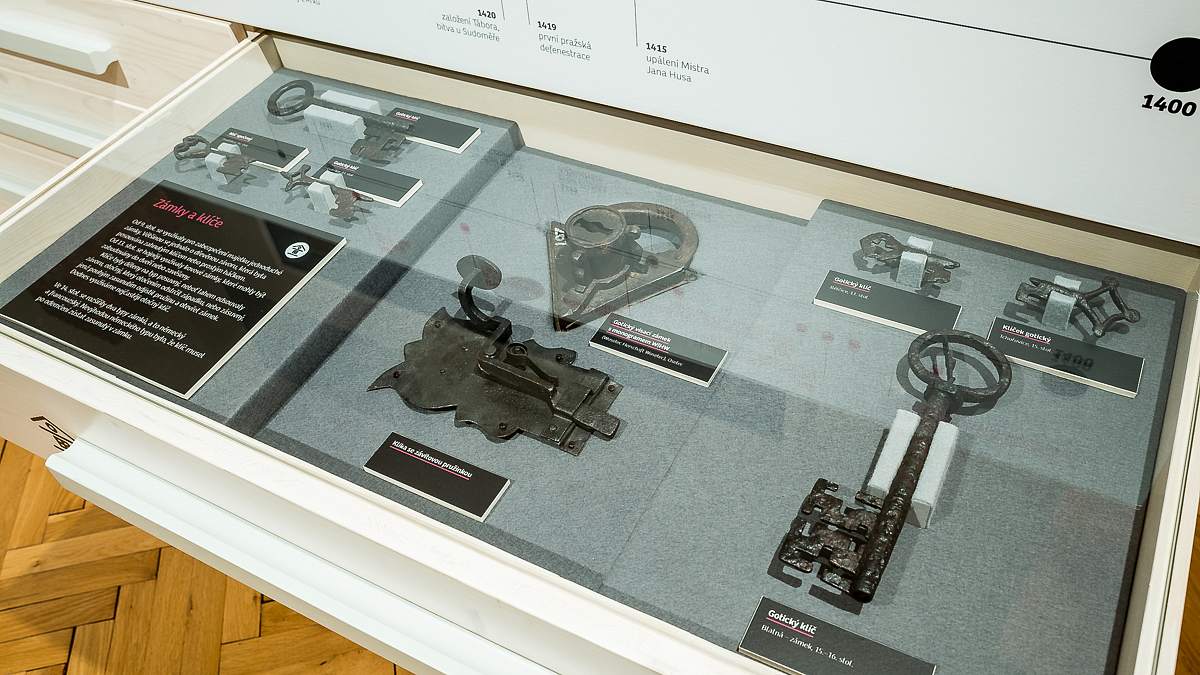MEDIEVAL HOUSE IN THE BLATNÁ REGION
In the 13th century, it was the residential house that underwent the biggest transformation. It was lifted above ground level and the underground part of especially town houses turned into an arched cellar. The interior layout of the house was divided into a living space, including a kitchen, and a production space. The difference between rural and urban dwellings was in the growth in height or space. As early as at the beginning of the 15th century, the size of town houses in Blatná were limited by plots of land. It was not possible to extend them sideways and so the town houses grew tall. We learn about plots of land (Czech: městiště) in the early 15th century Blatná from a document made in 1489 by Břeněk from Strakonice. The rear part of each plot was entered through a passage which had been roofed during the 14th century and become a part of the ‘mazhaus’ – a space for craft and trade. The houses were mostly wooden and only the front wall facing the street or square was plastered. By contrast, village houses were divided into a living room, entrance hall and storage space – chamber or pantry. The other outbuildings were situated along the perimeter of the wide plot of land, thus forming an enclosed area of the yard.
As the house evolved, the door locking mechanism also changed. The simplest system was a wooden sliding latch that could be unlocked with an appropriate hook. Since the 13th century, metal locks would be used, which could be built into doors or hung. There were the following types of keys: the sliding key, which slid the latch aside, the turning key, which pushed the latch aside by a turning motion, or the insertable key, which, once simply inserted in, unlocked the spring and opened the lock. To this day, we use the turning key most often. In the 14th century, two types of locks came into widespread use: the German lock and the French lock. The disadvantage of the German one was that the key had to remain in the lock after unlocking.
An important innovation of the 13th century was also the ceiling and a smoke hood that transported smoke from the fire into the attic. Over the 13th to 15th centuries, the open fireplace on a raised plinth was covered with a simple oven and the furnace was moved to the adjacent room. This period also saw the emergence of the chimney, which would be often still made of wood and greased with clay, first opening under the roof and then leading out of the building. This was why fire was the most frequent and most feared disaster for many settlements. The most significant innovation in furnaces was the tiled stove, which probably reached Blatná in the 14th or 15th century. The design of the relief motifs on the heating plate of the stove followed the latest trends within society and therefore we encounter various motifs, including religious, mythological, secular and even political motifs.


